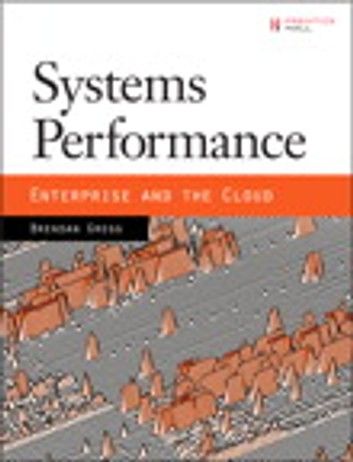| FindBook |
有 1 項符合
Systems Performance的圖書 |
 |
Systems Performance 作者:Brendan Gregg 出版社:Pearson Education 出版日期:2013-10-07 語言:英文 |
| 圖書館借閱 |
| 國家圖書館 | 全國圖書書目資訊網 | 國立公共資訊圖書館 | 電子書服務平台 | MetaCat 跨館整合查詢 |
| 臺北市立圖書館 | 新北市立圖書館 | 基隆市公共圖書館 | 桃園市立圖書館 | 新竹縣公共圖書館 |
| 苗栗縣立圖書館 | 臺中市立圖書館 | 彰化縣公共圖書館 | 南投縣文化局 | 雲林縣公共圖書館 |
| 嘉義縣圖書館 | 臺南市立圖書館 | 高雄市立圖書館 | 屏東縣公共圖書館 | 宜蘭縣公共圖書館 |
| 花蓮縣文化局 | 臺東縣文化處 |
|
|
The Complete Guide to Optimizing Systems Performance
Written by the winner of the 2013 LISA Award for Outstanding Achievement in System Administration
Large-scale enterprise, cloud, and virtualized computing systems have introduced serious performance challenges. Now, internationally renowned performance expert Brendan Gregg has brought together proven methodologies, tools, and metrics for analyzing and tuning even the most complex environments. Systems Performance: Enterprise and the Cloud focuses on Linux® and Unix® performance, while illuminating performance issues that are relevant to all operating systems. You’ll gain deep insight into how systems work and perform, and learn methodologies for analyzing and improving system and application performance. Gregg presents examples from bare-metal systems and virtualized cloud tenants running Linux-based Ubuntu®, Fedora®, CentOS, and the illumos-based Joyent® SmartOS™ and OmniTI OmniOS®. He systematically covers modern systems performance, including the “traditional” analysis of CPUs, memory, disks, and networks, and new areas including cloud computing and dynamic tracing. This book also helps you identify and fix the “unknown unknowns” of complex performance: bottlenecks that emerge from elements and interactions you were not aware of. The text concludes with a detailed case study, showing how a real cloud customer issue was analyzed from start to finish.
Coverage includes
• Modern performance analysis and tuning: terminology, concepts, models, methods, and techniques
• Dynamic tracing techniques and tools, including examples of DTrace, SystemTap, and perf
• Kernel internals: uncovering what the OS is doing
• Using system observability tools, interfaces, and frameworks
• Understanding and monitoring application performance
• Optimizing CPUs: processors, cores, hardware threads, caches, interconnects, and kernel scheduling
• Memory optimization: virtual memory, paging, swapping, memory architectures, busses, address spaces, and allocators
• File system I/O, including caching
• Storage devices/controllers, disk I/O workloads, RAID, and kernel I/O
• Network-related performance issues: protocols, sockets, interfaces, and physical connections
• Performance implications of OS and hardware-based virtualization, and new issues encountered with cloud computing
• Benchmarking: getting accurate results and avoiding common mistakes
This guide is indispensable for anyone who operates enterprise or cloud environments: system, network, database, and web admins; developers; and other professionals. For students and others new to optimization, it also provides exercises reflecting Gregg’s extensive instructional experience.
|











